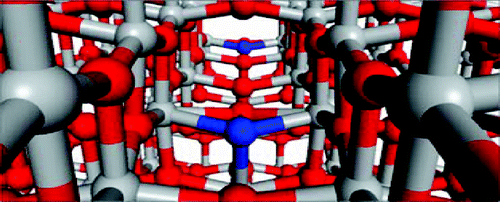P. Romero-Gómez, S. Hamad, J.C. González, A. Barranco, J.P. Espinós, J. Cotrino, A.R. González-Elipe
Journal of Physical Chemistry C, 114 (2010) 22546–22557
doi: 10.1021/jp104634j

N-containing TiO2 thin films with different amounts of nitrogen have been prepared by plasma enhanced chemical vapor deposition (PECVD) by using different titanium precursors without (titanium isopropoxide, TTIP) and with (tetrakis diethylamino titanium, TDEAT and tetrakis dimethylamino titanium, TDMAT) nitrogen in their structures and different N2/O2 ratios as plasma gas. For low/high content of nitrogen, Ti−NO- and/or Ti−N-like species have been detected in the films by X-ray photoelectron spectroscopy (XPS). Their optical behavior is characterized by a red shift of their absorption edge when Ti−N species are a majority, and by an unmodified edge with localized absorption states in the gap when only Ti−NO-like species are present in the film. The experimental results have been interpreted by calculating the density of states of model systems consisting of a 2 × 2 × 3 repetition of the anatase unit cell. This basic structure incorporates nitrogen defects in either substitutional or interstitial lattice positions that are considered equivalent to the Ti−N- and Ti−NO-like species detected by XPS. To simulate the effect of, respectively, a low or a high concentration of nitrogen, calculations have been carried out by placing two nitrogen defects either in separated or in nearby positions of the anatase structure. The computational analysis reveals that the defects have different stabilization energies and confirm that an edge shift of the valence band is induced by the substitutional nitrogen centers, as observed when a high concentration of Ti−N species becomes incorporated into the films. In agreement with the experimental results, when only Ti-NO like species are detected by XPS, no band gap narrowing is obtained by the calculations that predict the appearance of localized electronic states in the gap. The fact that only these latter films present water wetting angle photoactivity when irradiated with visible light supports that the presence of Ti−NO-like species is a required condition for visible light photoactivity.

